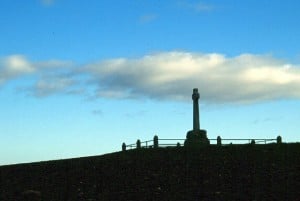
On 9th September 1513, the Battle of Flodden between England and Scotland took place near the village of Branxton in Northumberland.
England was victorious and the Scottish King, James IV, was killed in the battle. It was a proud moment for Catherine of Aragon, who was acting as regent for the absent Henry VIII.
You can read more about this battle in my article “The Battle of Flodden 1513”.